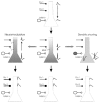Activity-dependent dendritic release of BDNF and biological consequences
- PMID: 19156544
- PMCID: PMC5352827
- DOI: 10.1007/s12035-009-8050-7
Activity-dependent dendritic release of BDNF and biological consequences
Abstract
Network construction and reorganization is modulated by the level and pattern of synaptic activity generated in the nervous system. During the past decades, neurotrophins, and in particular brain-derived neurotrophic factor (BDNF), have emerged as attractive candidates for linking synaptic activity and brain plasticity. Thus, neurotrophin expression and secretion are under the control of activity-dependent mechanisms and, besides their classical role in supporting neuronal survival neurotrophins, modulate nearly all key steps of network construction from neuronal migration to experience-dependent refinement of local connections. In this paper, we provide an overview of recent findings showing that BDNF can serve as a target-derived messenger for activity-dependent synaptic plasticity and development at the single cell level.
Figures




References
-
- Lessmann V, Gottmann K, Malcangio M. Neurotrophin secretion: current facts and future prospects. Prog Neurobiol. 2003;69:341–374. - PubMed
-
- Lu B, Pang PT, Woo NH. The yin and yang of neurotrophin action. Nat Rev Neurosci. 2005;6:603–614. - PubMed
-
- Thoenen H. Neurotrophins and neuronal plasticity. Science. 1995;270:593–598. - PubMed
-
- Ernfors P, Merlio JP, Persson H. Cells expressing mRNA for neurotrophins and their receptors during embryonic rat development. Eur J Neurosci. 1992;4:1140–1158. - PubMed
Publication types
MeSH terms
Substances
LinkOut - more resources
Full Text Sources
Miscellaneous

